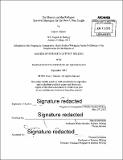| dc.contributor.advisor | Marcia Bartusiak. | en_US |
| dc.contributor.author | Giaimo, Cara J | en_US |
| dc.contributor.other | Massachusetts Institute of Technology. Department of Comparative Media Studies. | en_US |
| dc.date.accessioned | 2016-02-29T15:02:43Z | |
| dc.date.available | 2016-02-29T15:02:43Z | |
| dc.date.copyright | 2015 | en_US |
| dc.date.issued | 2015 | en_US |
| dc.identifier.uri | http://hdl.handle.net/1721.1/101361 | |
| dc.description | Thesis: S.M., Massachusetts Institute of Technology, Department of Comparative Media Studies, 2015. | en_US |
| dc.description | Cataloged from PDF version of thesis. | en_US |
| dc.description | Includes bibliographical references (pages 37-38). | en_US |
| dc.description.abstract | As humans rebuild the world to suit our needs, many of our fellow creatures simply get out of the way-but others try their luck alongside us. Austin, Texas is home to two notable urban wildlife populations. In the early 1980s, one and a half million Mexican Free-tailed Bats moved into a bridge in the center of the city. Though initially greeted with fear and suspicion, they managed to turn their reputation around, thanks to the dedication of bat enthusiast Merlin Tuttle and their own set of helpful characteristics. Their nightly flight is now a popular tourist attraction, and the bats themselves are a beloved part of Austin's culture. Meanwhile, the rare Barton Springs Salamander, which has lived for in the same spring system for millennia, has watched Austin grow up around its home, and has watched its citizens turn that home into a popular recreational swimming area. Now, as the city's growth threatens the salamander and its habitat, environmental activists, academic scientists, and city wildlife managers do their best to save the salamander, and to leverage its rarity to save Barton Springs. The story of each species illuminates the many different ways in which we relate to the animals that live alongside us, and what those relationships say about us-our values, our goals, and how we picture the future. | en_US |
| dc.description.statementofresponsibility | by Cara J. Giaimo. | en_US |
| dc.format.extent | 38 pages | en_US |
| dc.language.iso | eng | en_US |
| dc.publisher | Massachusetts Institute of Technology | en_US |
| dc.rights | M.I.T. theses are protected by copyright. They may be viewed from this source for any purpose, but reproduction or distribution in any format is prohibited without written permission. See provided URL for inquiries about permission. | en_US |
| dc.rights.uri | http://dspace.mit.edu/handle/1721.1/7582 | en_US |
| dc.subject | Comparative Media Studies. | en_US |
| dc.title | The mascot and the refugee : survival strategies for the new urban jungle | en_US |
| dc.title.alternative | Survival strategies for the new urban jungle | en_US |
| dc.type | Thesis | en_US |
| dc.description.degree | S.M. | en_US |
| dc.contributor.department | Massachusetts Institute of Technology. Graduate Program in Science Writing | en_US |
| dc.identifier.oclc | 939624290 | en_US |
